Search the Special Collections and Archives Portal
Search Results
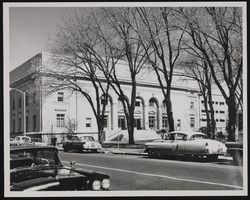
Exterior view of the State Building in Reno, Nevada: photographic print
Date
Archival Collection
Description
Image
Mimi Rodden oral history interview
Identifier
Abstract
Oral history interview with Mimi Rodden conducted by Claytee White on April 9, 2009 for the Boyer Early Las Vegas Oral History Project. Rodden begins by discussing her family's Basque heritage from their immigration to California and then into northern Nevada. She then discusses her immediate family, especially her mother, and the beginning of ther own volunteer work, which led to a lifelong interest in historic preservation that began with fundraising for the Nevada State Museum. After moving to Las Vegas, Nevada, Rodden continued working on historic preservation activities around the Keil Ranch and other historic sites in Clark County. Her work led to a Presidential selection for the National Advisory Council on Historic Preservation. She then discusses her move to Boulder City, Nevada and her work on the preservation of Tonopah Mining District.
Archival Collection
Huntridge Family Entertainment Center and Huntridge Theater Records
Identifier
Abstract
The Huntridge Family Entertainment Center and Huntridge Theater Records (1980-1981) consist of a photographic album documenting the construction and opening of the Huntridge Family Entertainment Center in 1980 as well as some photographs of the historic Huntridge Theater.
Archival Collection
Courtney Mooney oral history interview
Identifier
Abstract
Oral history interview with Courtney Mooney conducted by Suzanne Becker on July 30, 2007 for the Voices of the Historic John S. Park Neighborhood Oral History Project. Mooney describes her work as the urban design coordinator for Las Vegas, Nevada. Mooney also discusses the past, present, and future of the John S. Park neighborhood.
Archival Collection

Transcript of interview with Chris Guinchigliani by Suzanne Becker, July 20, 2007
Date
Archival Collection
Description
Text
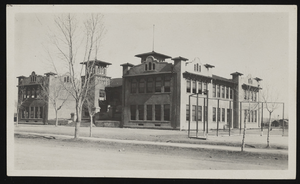
Photograph of Las Vegas Grammar School building, Las Vegas (Nev.), 1910-1920
Date
Archival Collection
Description
Image
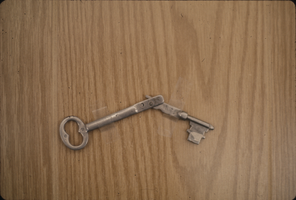
Slide of Key to Panaca Co-op, 1970
Date
Archival Collection
Description
Image
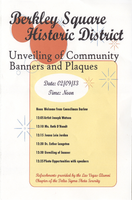
Brochure from the Unveiling of Community Banners and Plaques program, 2013
Date
Archival Collection
Description
Program listing speakers for the community event held to unveil banners and plaques in the Berkley Square Historic District, February 9, 2013.
Text
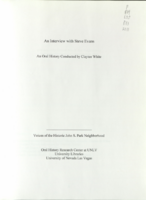
Transcript of interview with Steve Evans by Claytee D. White, June 15, 2010
Date
Archival Collection
Description
Text
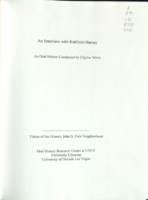
Transcript of interview with Kathleen Harney by Claytee D. White, July, 19, 2010
Date
Archival Collection
Description
Text
